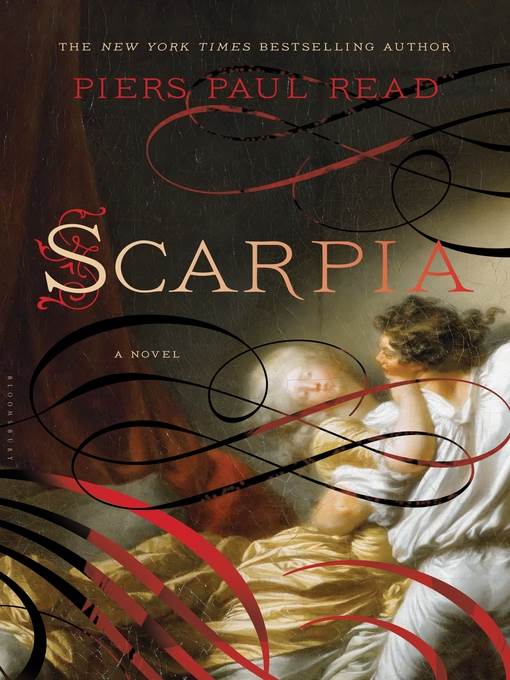
Scarpia
- اطلاعات
- نقد و بررسی
- دیدگاه کاربران
نقد و بررسی

January 11, 2016
Read's galloping story follows the history of Italy and the rest of Europe during the time of the French Revolution. The plot hangs lightly on the tale told in Giacomo Puccini's renowned opera Tosca. But Puccini's work was based on a play by an anti-clerical sympathizer to the French, and Read sets out to correct what he believes is a mistaken characterization of Tosca's Baron Vitellio Scarpia, a Sicilian soldier in the papal army. Expositions of historical fact are interrupted by brief forays into the dramatic story of Scarpia's slow rise to fame and fortune in his service to church and king. Scarpia lands on his feet in Rome, a favorite of more than one cleric with influence. Taken under the wing of the Roman aristocracy, he becomes the cicisbeo of a contessa, then marries the willful Paola, Principessa di Marcisano. In Read's view, Scarpia is steadfast and noble in his defense of his principles, which happen to align with the brutal and vengeful King Ferdinand of the Kingdom of the Two Sicilies, while the craven Roman aristocrats, including his unfaithful wife, throw their lot in with the French who have momentarily conquered the Papal States. The book is an excuse for immersion into the pastâand history, more than Scarpia, is Read's most compelling character.

January 1, 2016
The back story of Puccini's opera Tosca. Early on we meet Floria Tosca, a 15-year-old peasant girl from the Venetian countryside. She's gifted with a beautiful voice, which is noticed in 1789 by a bishop who hears her singing in her local parish choir. He invites her to Venice--promising her parents she will be safely housed in a convent when she's not soloing in the cathedral. But soon a nobleman, Prince Belgioioso d'Este, persuades her that only an operatic career would fully exploit her gifts. Scarpia, the villain in Tosca, is the much more likable main character here. A member of the lesser nobility, this young Sicilian is drummed out of the Spanish army for insubordinate acts of derring-do. He makes his way to Rome, where he's offered a respectable if less-than-adventurous post with the papal guards. As revolution overtakes France, he's sent to Venice to assess that city's readiness for French anti-royalist aggression. There, he has a brief romantic encounter with Tosca. Back in Rome, Scarpia enjoys the patronage of the pope's treasurer, Ruffo, who educates him in the internecine intrigues and pitfalls of Roman society and ultimately negotiates a marriage for him to a princess, Paola. Scarpia and Paola both welcome the match, and to place them on an equal footing, the pope elevates him to the rank of baron. Napoleon's star rises and his forces conquer Rome, exacting a high price in fines and works of art from both the papacy and the nobility. Paola falls prey to the blandishments of a sinister French portrait painter, while Scarpia is exiled, triggering the events detailed in the opera. A character list is sorely needed, and often, story and conflict struggle to stay afloat in a deluge of exposition. Overly ornate though engrossing depiction of a tumultuous period in Italian history, when the French looted Italian treasures for the Louvre and deposed the pope.
COPYRIGHT(2016) Kirkus Reviews, ALL RIGHTS RESERVED.

Starred review from December 1, 2015
Open this book, and you will be transported to the year 1777 and meet Vitello Scarpia, a young man who disdains both farming and religious orders. Instead, he becomes a soldier, and after excelling at military maneuvers is given the title of baron and introduced to Roman society. This handsome Sicilian soon becomes the lover of a countess and by chance meets Floria Tosca, the newly discovered opera diva. Enrolled as a military leader by the papal army, Scarpia successfully battles the French and Jacobin threats to the sovereign states that now comprise Italy. Political, marital, and military intrigues unfold in a novel richly detailed with historical facts, with the sequence of events at the end of the novel making some corrections to Puccini's famous opera Tosca. VERDICT Opera lovers and those interested in late 18th-century Western European history will thoroughly enjoy diving into this excellent book by Read (Alive), an engrossing tale of love and ambition that makes historical characters come alive on the page.--Lisa Rohrbaugh, Leetonia Community P.L., OH
Copyright 2015 Library Journal, LLC Used with permission.

November 15, 2015
Readers will take away different things from Read's newest novel, depending on their familiarity with the source material. Newcomers to Puccini's opera Tosca will find themselves following a dramatic tale of love, war, honor, and women's fickleness while learning about the political circumstances of late eighteenth-century Italy, a land where monarchies and Catholicism are threatened by the rising tide of republican thought emanating from revolutionary France. Those with prior knowledge of the opera will also recognize how shrewdly its heartless villain, Baron Scarpia, has been refashioned into a tragic hero. Vitellio Scarpia is a flawed protagonist, a hotheaded Sicilian adventurer possessed by the spirit of vendetta. Following some youthful recklessness, he loses his fortune but later ascends to become a loyal, trusted officer in the pontifical army. Scarpia's background is richly imagined, and Floria Tosca, a young woman with a glorious singing voice, is mostly a minor character whose story interweaves with his. There are numerous nonfiction digressions from Scarpia's story, some of which are fairly dry, but they illuminate the context of his turbulent times.(Reprinted with permission of Booklist, copyright 2015, American Library Association.)




دیدگاه کاربران